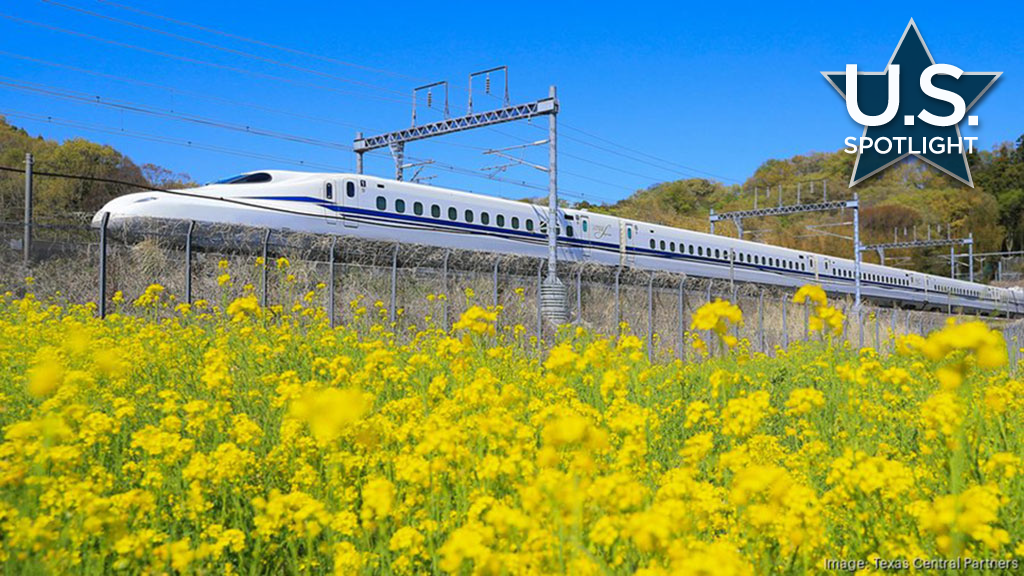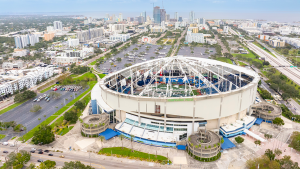Across the United States, initiatives are underway to develop a national high speed rail (HSR) network to move people quickly between major urban centres.
Texas has been a notable holdout for HSR development. In fact, Gov. Greg Abbott signed Senate Bill 977 into law that specifically forbids any state funds being used for any private entity that seeks to build a rail system operating at speeds over 110 mph.
On the other hand, there is plenty of state funding available for roads and highways. Under the 2024 Unified Transportation Program, over $100 billion has been allocated to address congestion and to improve or otherwise preserve roadways across Texas.
That isn’t to say passenger rail lines in Texas aren’t undergoing expansion. For example, the 26-mile DART Silver Line will connect Plano and the Dallas-Fort Worth airport, with seven stops in between. Service is expected to begin in mid-2026.
HSR is not just another commuter rail line, however.
Texas Central Partners, LLC, is proposing an HSR network, estimated to cost as much as $30 billion, linking Dallas-Fort Worth with Houston using the same lightweight Shinkansen, or “Bullet trains,” seen in Japan. Trains would run on 240 miles of dedicated tracks at speeds over 200 mph. And although limited in number, stations and terminals would not be simply light rail or commuter rail platforms, but economic drivers for retail and hotel development in the immediate area.
However, Texas Central Partners is a private entity. Under SB977, its HSR proposal cannot receive state financial support, only assistance with co-ordinating public/stakeholder engagement, and with the review of planning and environmental issues through the Federal Railroad Administration.
Advocating for improved rail across the entire United States is the non-profit national organization called the High Speed Rail Alliance. It identifies the Dallas-Fort Worth to Houston route as, “a key building block in the reinvention of the U.S. transportation system” that could attract as many as six million passengers annually by 2029.
“The electrified trains will run at maximum speeds of 205 mph and the trip will take 90 minutes. That’s two hours less than driving and about an hour less than flying, including airport terminal time. The trains will run 18 hours per day, with departures every half hour during peak periods.”
The concept of HSR in Texas has been discussed for decades, facing political pushback and opposition from landowner interests along the way. However, Texas Central’s HSR environmental impact statement was approved in 2020. Combined with the granting of eminent domain authority in June last year needed to acquire land for the route, the door is now open for multi-level public-private funding efforts to begin.A further boost was recently provided by Amtrak, which joined Texas Central in August to develop the HSR program.
“Amtrak has co-operated with Texas Central on various initiatives since 2016 and the two entities are currently evaluating a potential partnership to further study and potentially advance the project,” Amtrak said in a media release.
“Texas Central and Amtrak have submitted applications to several federal programs in connection with further study and design work for the potential Dallas to Houston segment, including the Consolidated Rail Infrastructure Safety and Improvements (CRISI) grant program, the Corridor Identification and Development program, and the Federal-State Partnership for Intercity Passenger Rail (FSP-National) grant program.”
Now that a HSR system between Dallas-Fort Worth and Houston is starting to move ahead, Austin wants to be included too.
“A high-speed passenger rail system connecting the largest communities in our state could create economic growth, address affordability issues, and promote a safer and more environmentally responsible way to travel for everyone,” Travis County Judge Andy Brown told local media. “This is an investment in our future and an investment in the people who live in our communities.”
Key to HSR interconnection within Texas and throughout the country is the minimizing or eliminating of transfers between trains as passengers travel to their final destination.
“High speed rail only works if it’s a one seat ride and if transfers are easy, seamless and frequent,” said Brendon Wheeler, metropolitan transportation plan manager at North Central Texas Council of Governments, during a recent webinar. “We really think this needs to be an integrated corridor.”
That means the State of Texas will need to do more than sit at the siding, said Wheeler.
“The state needs to be engaged with the various entities regarding what high-speed rail in Texas should look like and to co-ordinate that with other states. State-wide planning is very important to ensure we are moving forward correctly.”











Recent Comments
comments for this post are closed